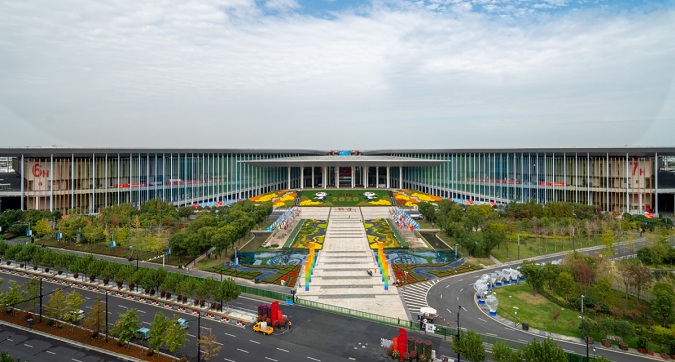

The National Exhibition and Convention Center (Shanghai) serves as the venue of the CIIE in the Hongqiao International CBD, Shanghai. [Photo by Gao Erqiang/chinadaily.com.cn]
The Hongqiao International Open Hub, with the Shanghai Hongqiao International Central Business District as its core, hit a regional GDP of 2.58 trillion yuan ($360.17 billion) in 2021.
The 7,000-square-kilometer area, which is less than 2 percent of the total area of the Yangtze River Delta's Jiangsu, Zhejiang and Anhui provinces and Shanghai, contributed to nearly 10 percent of the region's economic aggregate.
The Hongqiao Hub is playing a distinctive and essential role in achieving high-level opening-up and high-quality development in the new era, said Qian Xuesheng, senior researcher at the Smart City Research Center of Fudan University, in an article.
Qian noted that as the permanent host of the China International Import Expo, Hongqiao is undertaking a series of strategic missions to serve China's new development pattern and create new advantages in international cooperation.
To accelerate the expansion of CIIE's spillover effects, Hongqiao has used institutional reform and innovation to promote the integrated development of foreign and domestic trade, offshore businesses and cross-border flow and storage of data.
Hongqiao is also the main transportation junction and economic center of the YRD city cluster, with a high density of talent, trade, data and capital, Qian added.
The portion of the hub that is under Shanghai's jurisdiction is home to 287 "little giant" companies (small enterprises specializing in niche markets with cutting-edge technologies and great potential), accounting for 56.6 percent of Shanghai's total.
The Hongqiao CBD, home to more than 500 headquarters, has signed investment deals worth 130 billion yuan in 2022, up 60 percent compared with last year.
Underscoring scientific and technological innovation and achievement transformation, especially in new-generation information technology and biomedicine, Hongqiao CBD has scientific research and technical services companies taking up 15.6 percent of its total number of companies. The figure is three times Shanghai's average.